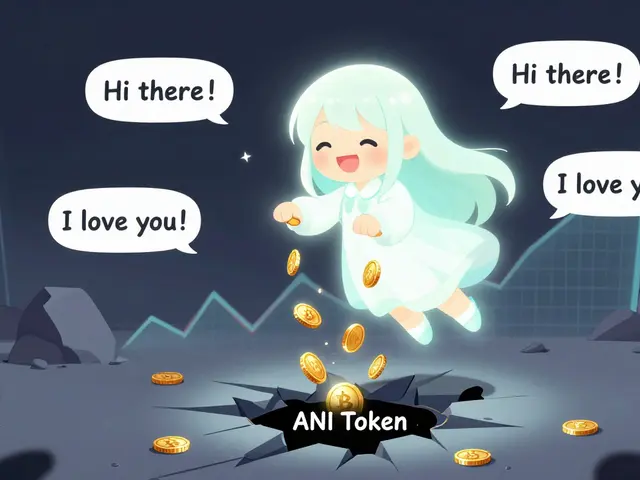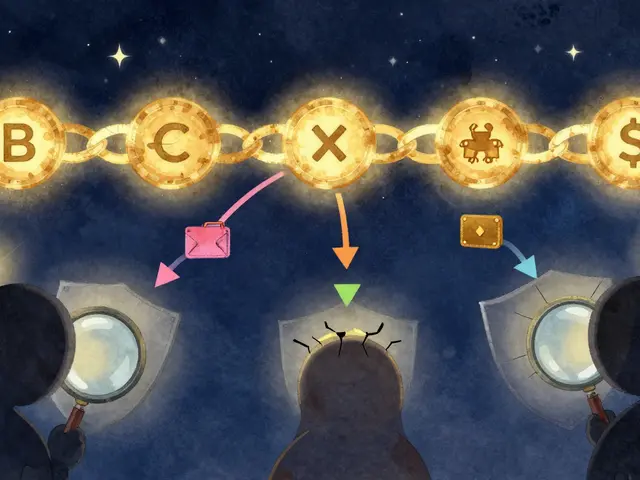Iranian Crypto Users: How They Trade, Bypass Censorship, and Navigate Regulations
When looking at Iranian crypto users, people in Iran who trade, invest, or mine digital assets despite local restrictions. Also known as Iranian crypto traders, they often rely on VPN crypto Iran, secure virtual private networks that mask IP addresses and bypass government firewalls, navigate sanctions, economic measures that limit formal banking access, and use local platforms like Nobitex, Iran’s leading crypto exchange that complies with domestic rules to move funds.
Iranian crypto users have become a distinct community that balances risk and opportunity every day. The first thing you’ll notice is their heavy reliance on VPN services. A typical trader connects to a server outside Iran, then logs into a foreign exchange or a peer‑to‑peer marketplace. This workaround creates a clear subject‑predicate‑object relationship: Iranian crypto users depend on VPNs to hide their online activity. The VPN market in Iran is crowded, but only a few providers offer the speed and encryption needed for live trading.
Why sanctions shape the crypto landscape in Iran
International sanctions have forced many local investors to look beyond traditional banks. Instead of waiting for a delayed wire transfer, they turn to decentralized finance platforms that accept crypto directly. This creates another semantic triple: sanctions push Iranian crypto users toward decentralized exchanges. The result is a surge in demand for tokens that can be swapped without fiat involvement, such as stablecoins and utility tokens. Articles in the portal’s collection explain how these users evaluate risk, compare fees, and protect themselves from scams.
Local exchanges like Nobitex play a crucial bridging role. They let users deposit Iranian rial, exchange it for Bitcoin or USDT, and then move the assets to foreign wallets. In practice, Nobitex provides a bridge between fiat and crypto for Iranian users. The platform also offers KYC verification that aligns with domestic regulations, reducing the chance of account freezes. Understanding how Nobitex works is essential before diving into any airdrop or mining operation.
Security concerns go beyond VPN detection. Recent enforcement crackdowns have shown that authorities can trace traffic patterns, even when users think they’re hidden. The portal’s “VPN Crypto Iran” guide details how traders get detected and what steps they can take to stay safe. One key recommendation is to rotate VPN servers regularly and use multi‑hop configurations. This adds layers of obfuscation, making it harder for monitoring tools to pinpoint a single exit node.
Beyond the technical side, cultural factors influence adoption. Many Iranians view crypto as a hedge against inflation, especially after years of rial devaluation. This perception fuels a community that shares tips on mining‑friendly countries, airdrop opportunities, and low‑fee exchanges. The tag page pulls together posts that cover a wide range of topics—from the “Top Crypto Mining‑Friendly Countries 2025 Ranking” to detailed airdrop walkthroughs—offering a one‑stop resource for anyone navigating the Iranian crypto scene.
For those interested in earning passive income, staking and liquidity mining are popular choices. However, the regulatory gray area means users must be vigilant about tax obligations and reporting requirements. The “Crypto FBAR Penalties” article explains how foreign crypto holdings can trigger hefty fines if not disclosed properly. While Iran does not have an FBAR equivalent, international partners may still request information, so best practice is to keep clear records.
Another practical aspect is the use of stablecoins to preserve value. Tokens like USDT, USDC, and locally popular ones such as XTUSD act as a buffer against price swings. The portal’s “XTUSD Stablecoin Explained” article compares these stablecoins, highlighting security audits and peg mechanisms. Iranian traders often prefer stablecoins that can be quickly converted back to rial through local exchanges, ensuring liquidity when needed.
Finally, the community stays informed through curated news feeds and step‑by‑step guides. Whether you’re looking for the latest airdrop like “VerseWar VERSE Token” or want to understand how “Multisig Wallets Are Essential for DAO Treasury Security,” the tag page aggregates reliable content that matches the real‑world challenges Iranian crypto users face every day. Dive into the list below to find actionable insights, safety tips, and market analysis tailored to your needs.
Crypto Exchanges to Avoid for Iranian Users (2025 Guide)
Learn which crypto exchanges Iranian users should avoid in 2025, why they're risky, and how to keep your digital assets safe under sanctions.





